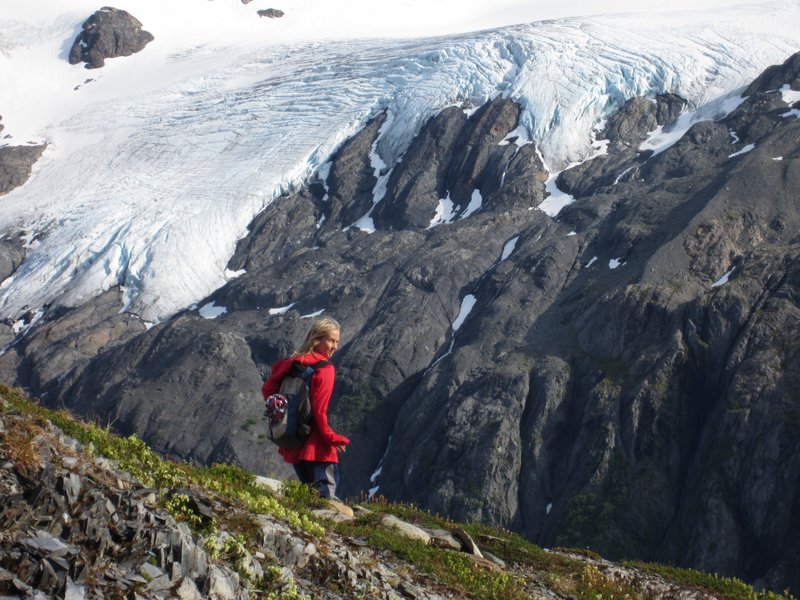
Although the campground was a little tight, the more time we spent in Seward the more it grew on us. Despite being crowded, the campground was quiet and peaceful, even with everyone hanging out outside until past 11pm in the long northern twilight. Seward has a beautiful setting; it sits on the edge of a large bay surrounded on all sides by mountains capped with snowfields and glaciers . For the kids there was a great playground adjacent to the campground and a slate beach right in front of our campsite. A paved pedestrian path runs two miles along the waterfront. On every walk along the path we saw otters and/or a bald eagles. The Seward library has the fastest public wifi in 3,000 miles by an order of magnitude or two. In Whitehorse, Skagway and Haines we got dial-up speeds, at best, on the library wifi, but in Seward the connection was often as fast as our home internet back in Tucson.

There is also some great hiking near Seward. One day Little Kid walked the entire way when the family did a two mile hike to the base of Exit Glacier in Kenai Fjords National Park. The next day Big Kid and I returned to the park and did a 9 mile (round trip) and 3,000 foot elevation gain hike up to an overlook of the Harding Icefield. The Harding Icefield is a huge (300 square miles) ice sheet left over from the last ice age that has 40 glaciers extending from its edges. The hike starts in forest near the base of Exit Glacier (so named because early explorers of the Harding Icefield used it as a way down), then climbs up through a bushy zone into alpine meadows sprinkled with flowers. Then the trail gets up into snowfields and slate scree, where we saw Dall sheep clambering on the heights above us. Big Kid really enjoyed hiking through snow in July, but my toes got a little cold in my Tevas. Finally, we crested the last rise and were looking down on the Harding Icefield, a vast expanse of snow and ice extending to the horizon with rocky mountain peaks poking through here and there. We were really lucky to have such great views of it. We met a man up there who said it was his fourth hike up the the overlook, and the first one were he could see anything besides fog and clouds.


Another day the whole family did a hike out to Tonsina Point, a beautiful spot where a creek filled with spawning salmon flows into the bay. On the way back from the point Big Kid offered to carry Little Kid. We agreed, thinking that she would give up after a few minutes (Little Kid weighs 30 lbs and Big Kid weighs only 60 lbs), but Big Kid carried her brother for 1.5 miles without any problems.
On our last full day in Seward the splurged to go to the excellent Alaska Sea Life Center. The center had large aquariums with a wife variety of Alaska sea life, from King Crabs to Stellar Sea Lions and Harbor Seals. A combined aviary and aquarium allowed us to see puffins swimming underwater, and the nests of puffins and other sea birds. There was a whole section on salmon, with aquariums with salmon at all the different stages of their life cycle. The kids, and grownups especially enjoyed a tank where you can touch sea stars, anemones and crabs.